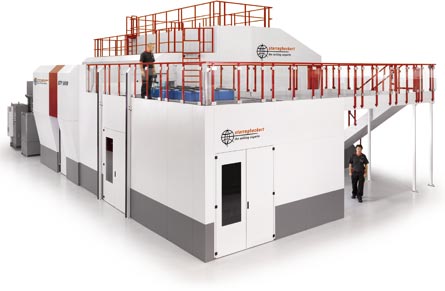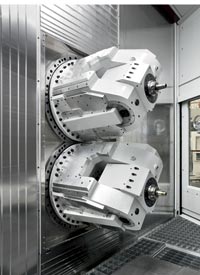As the downturn gripped the aerospace and other manufacturing industries in 2009, investment in plant and machinery was, unsurprisingly, one of the first items to be cut. Makers of milling equipment - of which Switzerland's Starragheckert is one of a few players in Europe - suffered badly.
However, although the company's order intake fell 45% over 2008 and revenues by 18%, it stayed profitable - faring better than most of its rivals, several of which made heavy losses. It has remained that way in the first half of 2010.
Chief executive Frank Brinken attributes Starragheckert's resilience to being "big enough to perform, but small enough to listen". A modest-sized player in a market dominated by large German and Japanese machine manufacturers, it has 783 employees across four sites in Switzerland, Germany and the UK, and turned over SFr253 million ($253 million) in 2009. However, Brinken cites its commitment to innovation. Research and development spending went up last year as a proportion of revenue.
|
|---|
The company has focused heavily on titanium manufacturing, a growing segment that relies on larger, more complex five-axis machinery. In aerospace - which represents about one-third of Starragheckert's business - it is used increasingly for critical primary structures, making up around 15% of the Boeing 787's content, for instance.
The company will deliver later this year its biggest and most complex product yet to a "northern European aerospace OEM". The 200t, dual-spindle BTP 5000 - at 18 x 12 x 6m (59 x 39.3 x 19.7ft) the size of a house - offers "a productivity leap in machining long titanium structural parts" such as longerons. It is one of the largest machine tools built, says Brinken.
|
|---|
Heckert, in Chemnitz, eastern Germany, built engines for Russian aircraft. Another heritage company, STP in Geneva, supplied components for the Spitfire's Rolls-Royce Merlin engine.
Although the Zurich-quoted company today manufactures the machines that create the aircraft parts, rather than the parts themselves, it still trades from its original locations under its heritage brands, with Starrag focusing on five-axis machines, Heckert on four-axle types and SIP on highly specialist "ultra and super precision" machining centres.
It also has a plant in Haddenham in the UK dedicated to Rolls-Royce, and will open a facility later this year in Bangalore.
The company puts a great deal of store in its "commitment to the titanium future", with Brinken believing that industry will continue to invest in new equipment. While aluminium machining is "all about reducing costs" in a very competitive field, "titanium needs really precise, big machines" because the parts are larger and more complex.
However, the North American market, he says, is lagging behind much of the rest of the world. Because of a reluctance to invest in expensive capital and an obsession with cleaning balance sheets since the 1990s, the trend there has been towards global outsourcing. This has weakened industry and will make it difficult for structures companies to "compete in the new world", says Brinken.
European manufacturers, on the other hand, did invest in the latest machinery in the 1990s and 2000s, and now the Chinese and even the Russians are doing the same, buying "the best equipment", says Brinken. "The US will run out of steam if they don't invest in titanium equipment," he adds. "There is still a sizeable aluminium business there, but that is moving to emerging markets and titanium is the growth area."
Source: Flight International

























